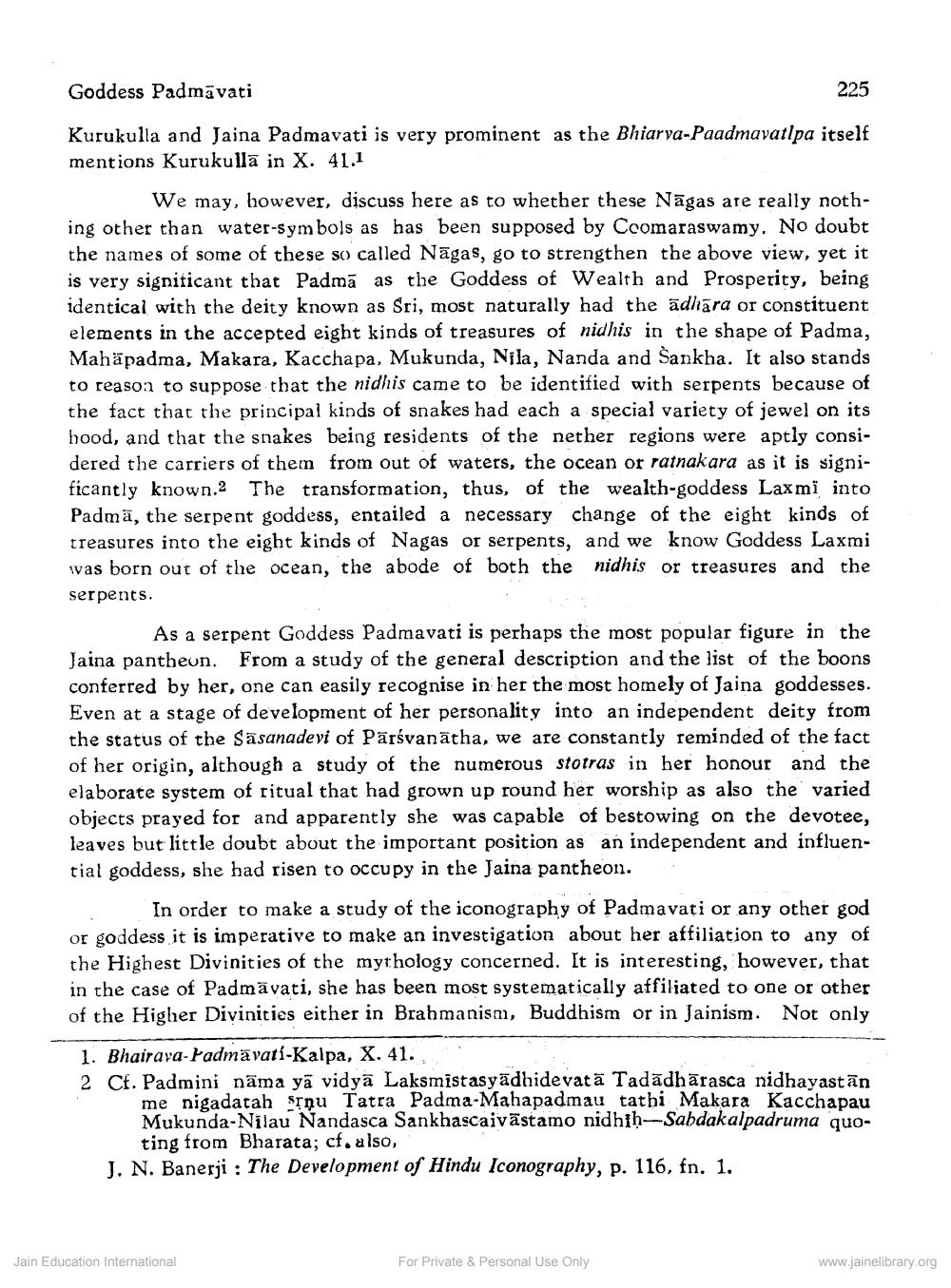________________
Goddess Padmāvati
225
Kurukulla and Jaina Padmavati is very prominent as the Bhiarva-Paadmavatlpa itself mentions Kurukulla in X. 41.1
We may, however, discuss here as to whether these Nāgas are really nothing other than water-symbols as has been supposed by Coomaraswamy. No doubt the names of some of these so called Nāgas, go to strengthen the above view, yet it is very signiticant that Padma as the Goddess of Wealth and Prosperity, being identical with the deity known as Sri, most naturally had the adhāra or constituent elements in the accepted eight kinds of treasures of nidhis in the shape of Padma, Mahäpadma, Makara, Kacchapa, Mukunda, Nila, Nanda and Sankha. It also stands to reason to suppose that the nidhis came to be identified with serpents because of the fact that the principal kinds of snakes had each a special variety of jewel on its hood, and that the snakes being residents of the nether regions were aptly considered the carriers of them from out of waters, the ocean or ratnakara as it is significantly known.2 The transformation, thus, of the wealth-goddess Laxmi into Padmā, the serpent goddess, entailed a necessary change of the eight kinds of treasures into the eight kinds of Nagas or serpents, and we know Goddess Laxmi was born out of the ocean, the abode of both the nidhis or treasures and the serpents.
As a serpent Goddess Padmavati is perhaps the most popular figure in the Jaina pantheun. From a study of the general description and the list of the boons conferred by her, one can easily recognise in her the most homely of Jaina goddesses. Even at a stage of development of her personality into an independent deity from the status of the Sāsanadevi of Pārsvanātha, we are constantly reminded of the fact of her origin, although a study of the numerous stotras in her honour and the elaborate system of ritual that had grown up round her worship as also the varied objects prayed for and apparently she was capable of bestowing on the devotee, leaves but little doubt about the important position as an independent and influential goddess, she had risen to occupy in the Jaina pantheon.
In order to make a study of the iconography of Padmavati or any other god or goddess it is imperative to make an investigation about her affiliation to any of the Highest Divinities of the mythology concerned. It is interesting, however, that in the case of Padmavati, she has been most systematically affiliated to one or other of the Higher Divinities either in Brahmanism, Buddhism or in Jainism. Not only
1. Bhairava-Padmavatí-Kalpa, X. 41. 2 Ct. Padmini nāma yā vidyā Laksmistasyādhidevatā Tadādhārasca nidhayastān
me nigadatah srnu Tatra Padma-Mahapadmau tathi Makara Kacchapau Mukunda-Nilau Nandasca Sankhascaivāstamo nidhih--Sabdakalpadruma quo
ting from Bharata; cf. also, J. N. Banerji : The Development of Hindu Iconography, p. 116, fn. 1.
Jain Education International
For Private & Personal Use Only
www.jainelibrary.org




